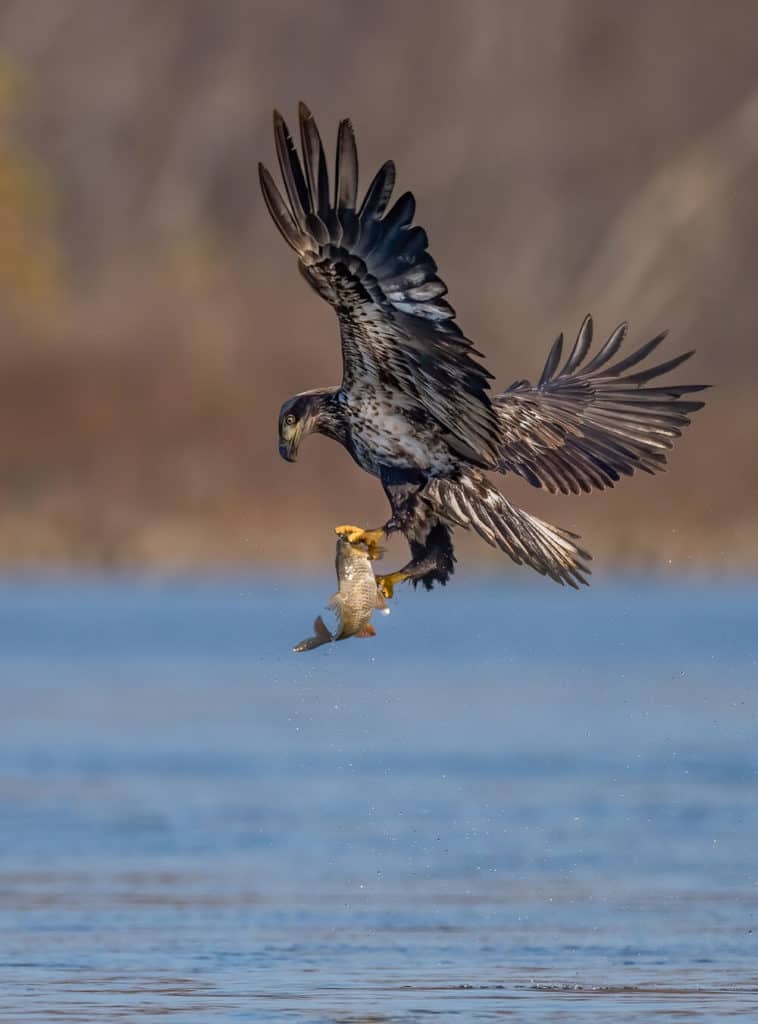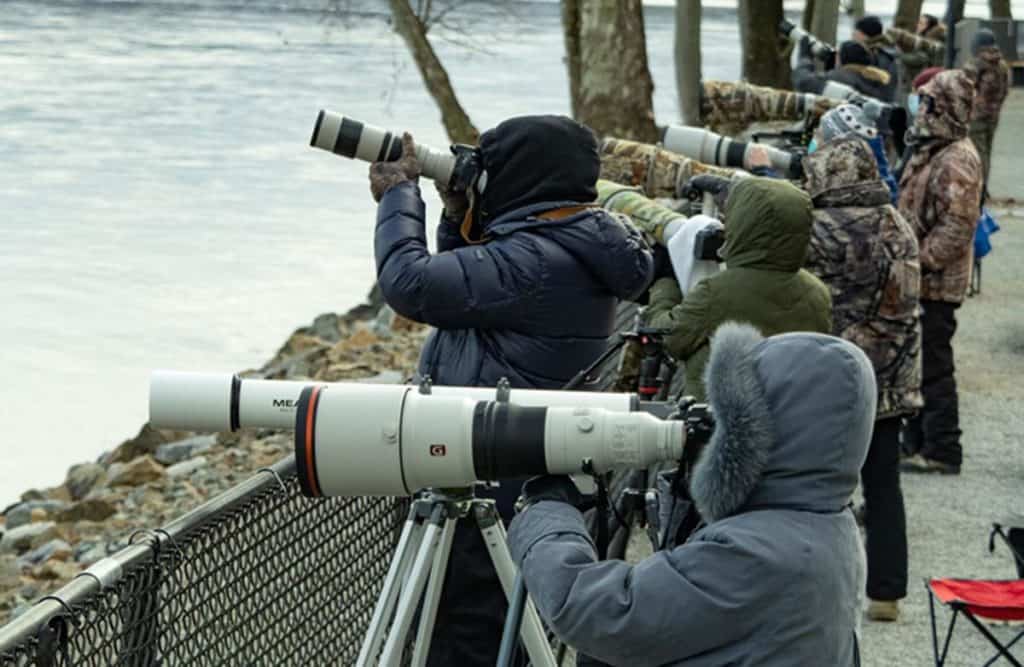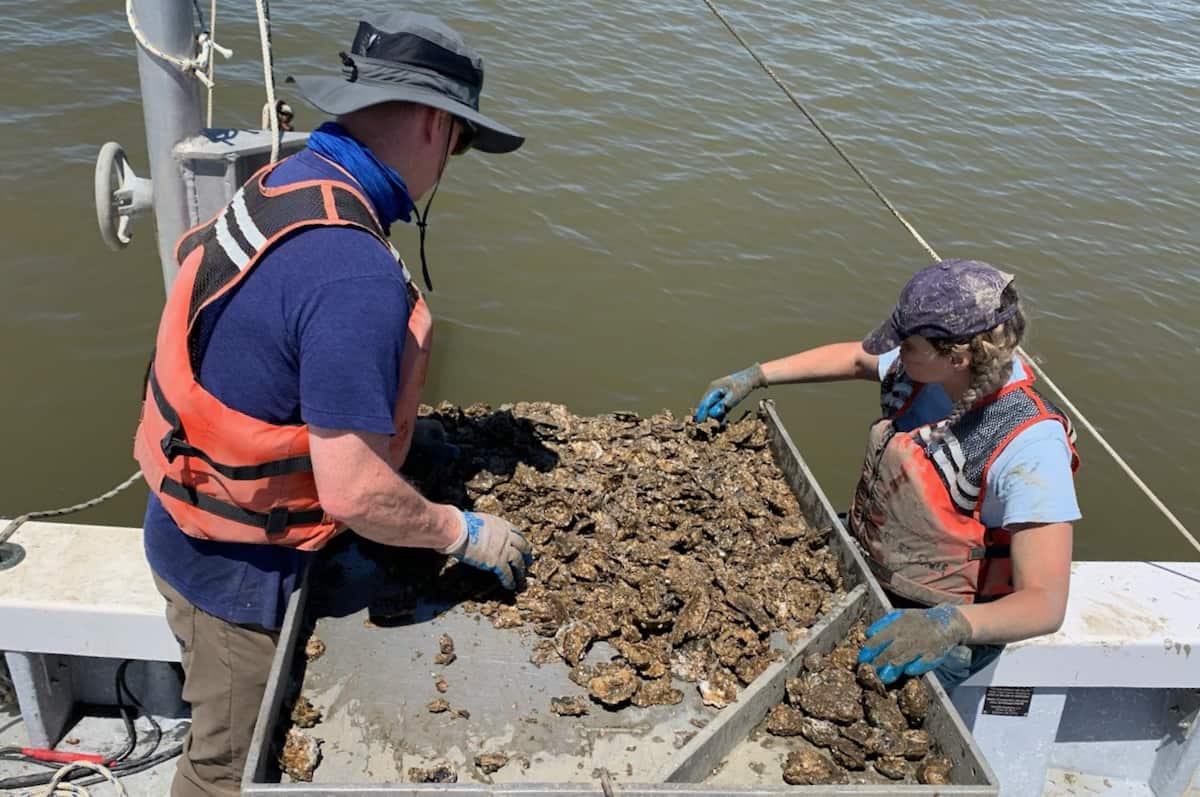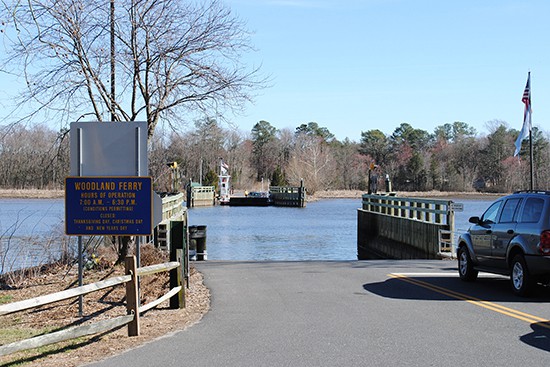By Ad Crable, Bay Journal News Service
It’s a chilly 27 degrees and still dark, but already a dozen or more photographers are setting up tripods and long lenses at the base of Maryland’s Conowingo Dam. They hope to capture dream images of bald eagles—close up, diving for fish and often robbing each other in midair.
One of the ramped-up hopefuls is Maria Costello of Philadelphia. It’s her first time visiting the tailrace where water exits the Conowingo Hydroelectric Generating Station on the Susquehanna River near the Pennsylvania line. She’s determined not to miss a moment of the opportunity. Several weeks earlier, the wildlife photographer had been blown away by a friend’s shots of two eagles in aerial combat over a fish plucked from the surface.
“I was like, this is it, this is the day. I have to go. I don’t care how cold it is, I don’t care how long I have to stay in the car, this is it, this is my day.” And here she was, in a stocking hat and gloves with the fingers exposed, setting up a 600 millimeter lens with a double teleconverter on a tripod, hoping for the photo of a lifetime.
In recent years, the spectacle of hundreds of adult and immature bald eagles at one place made the dam an international destination, and not just for photographers, who can sometimes number 100 or more. Now, tour buses disgorge tourists from New York and New Jersey who have heard about eagles flocking here in incredible concentrations.
October through January is the peak time to see lots of eagles.
“I couldn’t believe the number of bald eagles that were there,” said Dave Lychenheim, who founded the Conowingo Bald Eagles Facebook page, of his first experience at the dam. “It kind of makes you breathless when you see them.”
Few other places on the continent provide a close view of eagles as they perform aerial feats while diving for fish, their tail feathers skimming the water before rising upward with the prize locked in yellow talons.

Plucking a fish is hardly the end of the drama. More often than not, trailing eagles will dive at the avian angler, trying to dislodge the fish. Sometimes, the freefalling fish is snatched out of midair.
The river robbery is often successful, sometimes multiple times, before a victor wings away to a tree to devour its catch. Even then, the eagle may find itself winging through the labyrinth of branches with several eagles in pursuit.
“At high speed, it’s just amazing. Your jaw will drop,” Lychenheim said.
Adult eagles sometimes take their young on training runs. The parent will catch a fish and deliberately drop it so the juveniles can practice scooping it off the water surface with their talons.
Year-round, approximately 75–100 eagles have nests along the Susquehanna and fly up to about 25 miles to reach the dam. They are joined by others who visit in the fall and winter.
Eagles gather at Conowingo for a simple reason: reliable food. Especially in the spring, migrating fish find themselves blocked from moving upriver and mill around the tailrace. Throughout the year, fish on the upriver side of the dam are killed or stunned as they are sucked through 10 generators in the nearly mile-long dam.
The peak number of eagles arrives in the fall and winter when lakes and rivers freeze farther north in New York state and the Ohio Valley. The always moving tailrace, in contrast, never freezes.
Eagles perching in trees and on towers and rocks can see a belly-up fish from about 1.5 miles away.
Around 350 eagles have been counted on top days. Lychenheim has been going to the dam for 10 years, in all seasons, and always sees eagles. He once had 20 in his camera frame at one time.
In recent years, peak numbers have declined, a trend he attributes to climate change and fewer waterways freezing.
Some of the eagles at Conowingo have developed a kind of Pavlovian response to the sirens and flashing lights that announce when the dam is about to release water.
“The eagles will start chirping and getting into position,” Lychenheim said.
How do far-off eagles know to come to Conowingo? Lychenheim and John Maloney, a 76-year-old Conowingo groupie from Columbia, MD, believe the birds of prey somehow communicate with each other.
Lychenheim, who used to work on the Hubble Space Telescope for NASA, started the Conowingo Bald Eagles Facebook page nine years ago to provide tips for viewing eagles at the dam. It includes almost daily posts of images by photographers of all skill levels.
Veteran eagle watchers at the dam know to check with anglers at the fishing grounds below the dam to see if they are catching fish — a sign that eagles will likely be on hand, too. Observers help each other by calling out incoming eagles. The more eyes, the better.
You never know where the action ends up. “Bald eagles will chase each other right down the parking lot, 10 feet above the cars,” Lychenheim said.
You can read this story in full at bayjournal.com.




